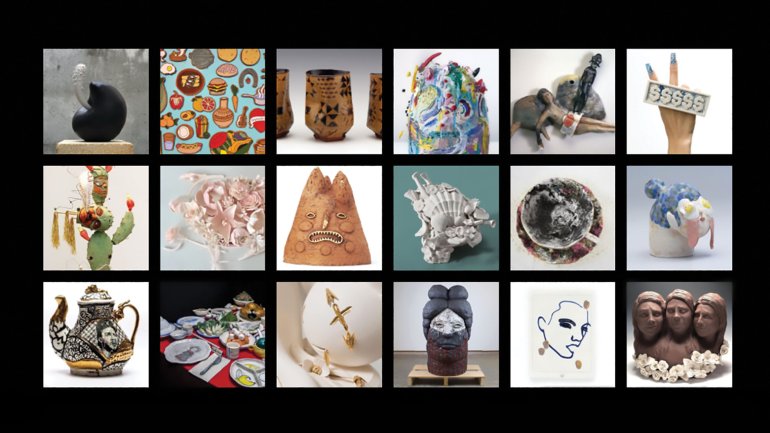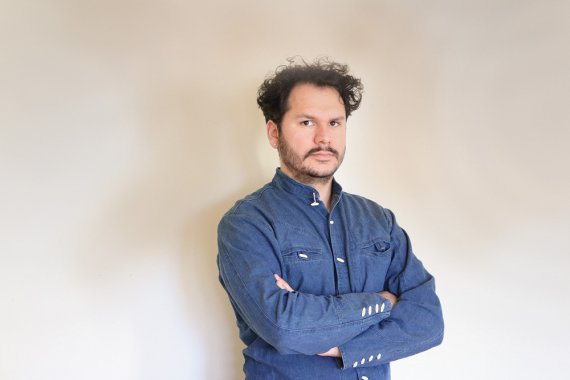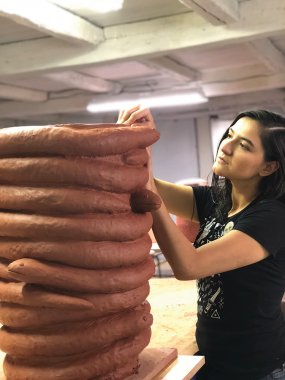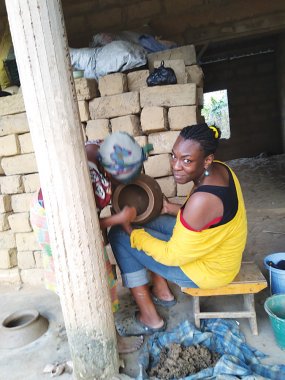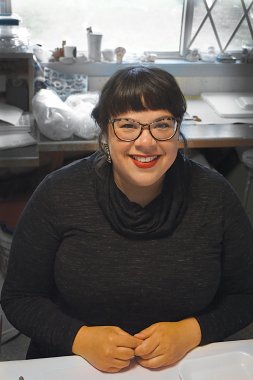Passing the Baton
Passing the Baton
Cam Waller, a clay artist studying in Japan, was one of the first people to contact the Color Network about mentorship opportunities. He is currently working toward becoming not only the first American but the first Black American MFA candidate in ceramics at Tokyo University of the Arts. When Waller discovered the Color Network – an online platform that aims to build a strong and supportive community for ceramic artists of color – he was excited. “I am feeling, more than ever, the need to connect with others and to have a mentor,” he says. “To see people of color coming together to support each other in ceramics is such a powerful thing.”
The Color Network launched in December 2018 with a mission to aid in the advancement of people of color in the ceramic arts, and is operated in partnership among five artists: Natalia Arbelaez, April Felipe, Salvador Jiménez-Flores, Adam Chau, and me. The Color Network highlights opportunities in the field and provides an artist database for teachers and curators to reference, helping them integrate a more diverse roster into their programming. Together, we aim to bring increased visibility to and also to foster cross-generational connections between artists who self-identify as people of color.
The idea for the organization took shape at the 2018 National Council on Education for the Ceramic Arts (NCECA) conference, where Arbelaez, Felipe, and Jiménez-Flores led a group discussion on organizing a supportive community for ceramic artists of color, which catalyzed their intentions to build one.
The name, however, emerged from an adjacent networking event for artists of color at the conference. Despite many of the artists not knowing one another, the event had the feeling of a family gathering. One attendee remarked how rejuvenating it felt to be in the company of so many ethnically diverse artists, since she was the only person of color in her studio environment.
As people talked, the same themes kept surfacing: How can we increase our visibility and representation in the larger clay community? How can we capitalize on our collective experiences to help each other? How can we organize a structure for mentorship and peer support?
During these conversations, artist and ceramics professor Bobby Scroggins shared that he once helped run a group of artists of color who curated their own shows and created opportunities for each other. Their name was the Color Network.
Scroggins went on to explain that the independent collective officially formed in 1991 in response to the scarce visibility of Black ceramists. Renowned artists including Winnie Owens-Hart, Ellen Day, and Stephen Carter were some of its early members. In later years, artists such as Patsy Cox and Paul Andrew Wandless, who originally participated as mentees, became deeply involved and were instrumental in maintaining the initiative until it disbanded in 2007.
Today, I and my fellow co-organizers are proud to carry forward the name of the original Color Network with the blessing of its founders. While the passionate discussions that emerged at the 2018 NCECA conference may have felt radically new to some of the younger attendees, in reality they were an extension of the same conversations that have been happening for decades.
We now have access to technologies for organizing that our predecessors did not, but today’s Color Network remains equally rooted in community and fueled by peer collaboration. In addition to the database, the website offers a monthly artist spotlight, exhibition opportunities, and a safe space to ask questions and receive feedback. We are also actively formalizing a process to connect artists of color with mentors, another of our primary goals.
Currently, the co-organizers donate time and money to support the Color Network’s mission, but our ambition is to obtain nonprofit status to be eligible for funding opportunities. We are also discussing expanding our mission to include underrepresented voices in creative disciplines outside of the ceramic arts.
To meet these goals, we are organizing a series of strategic planning conversations and are steadily increasing our visibility in the larger crafts community. As we continue these endeavors, we invite allies, advocates, and accomplices of all backgrounds and identities to join us. We look forward to growing our partnerships and continuing to facilitate connections between institutions and artists.
“This most recent iteration of the Color Network gives me a renewed sense of hope for the next generation of artists, craftspeople, and cultural leaders,” says Scroggins. “As the organization evolves, I believe their vision and leadership will help to broaden the ceramics community’s impact on society as a whole.”
